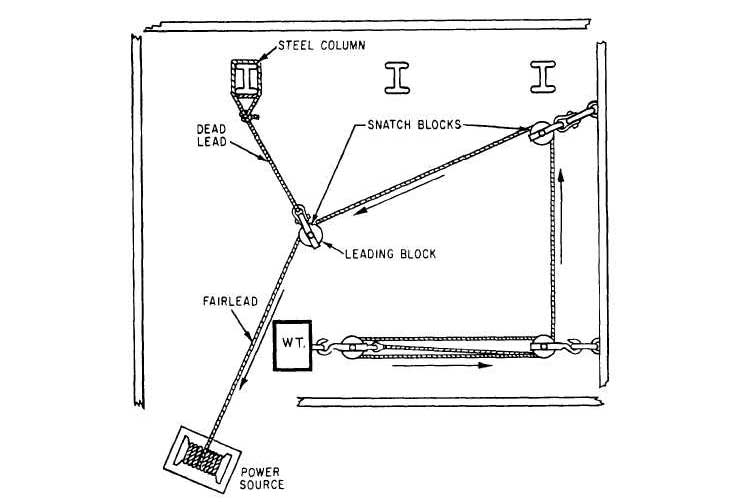
Figure 4-23. - Moving a heavy object horizontally along a floor with limited access using snatch blocks and fairleads.
MECHANICAL ADVANTAGE
The mechanical advantage of a tackle is the term applied to the relationship between the load being lifted and the power required to lift it. If the load and the power required to lift it are the same, the mechanical advantage is 1. However, if a load of 50 pounds requires only 10 pounds to lift it, then you have a mechanical advantage of 5 to 1, or 5 units of weight are lifted for each unit of power applied.
The easiest way to determine the mechanical advantage of a tackle is by counting the number of parts of the falls at the running block. If there are two parts, the mechanical advantage is two times the power applied (disregarding friction). A gun tackle, for instance, has a mechanical advantage of 2. Therefore, lifting a 200-pound load with a gun tackle requires 100 pounds of power, disregarding friction.
To determine the amount of power required to lift a given load by means of a tackle, determine the weight of the load to be lifted and divide that by the mechanical advantage. For example, if it is necessary to lift a 600-pound load by means of a single luff tackle, first determine the mechanical advantage gained by the tackle. By counting the parts of the falls at the movable block, you determine a mechanical advantage of 3. By dividing the weight to be lifted, 600 pounds, by the mechanical advantage in this tackle, 3, we find that 200 pounds of power is required to lift a weight of 600 pounds using a single luff tackle.
Remember though, a certain amount of the force applied to a tackle is lost through friction. Friction develops in a tackle by the lines rubbing against each other, or against the shell of a block. Therefore, an adequate allowance for the loss from friction must be added. Roughly, 10 percent of the load must be allowed for each sheave in the tackle.
Continue Reading